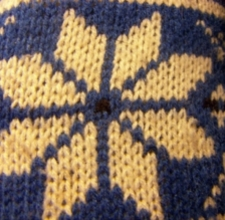Whites are the toughest clothes to keep looking crisp and clean, with
our crazy lives full of work, school, play, pets and messy meals. Check
out these tips for cleaning your white clothes:
Always, always, always sort
Even
if you’ve washed your favorite pair of blue jeans twenty times, there’s
always the chance that dyes or additives to the denim fabric can mix
into the water. Even a small bit of color can make whites appear dingy
or stained, so always be sure to take the time to sort your whites from
your colors.
Heat is your friend
Although many people have
begun to wash every load in cold or cool water to save on energy bills
and protect the environment, whites need truly hot water to remain
looking bright and clean. For most fabrics, hot water will always clean
better, but be sure to consult the care tag to be sure it won’t cause
shrinking in a particular garment.
When life gives you lemons, use the juice
If
you’re accustomed to using bleach in your white loads, you know that it
can begin to have a graying quality on clothing after many washes, not
to mention it has been known to irritate delicate skin. Lemon juice,
when added to a washer, has natural whitening qualities that will keep
your clothes looking brand new in a much gentler manner than bleach.
Ditch the dryer
Natural
fabrics like cotton can begin to fray in overly hot dryers, making them
look aged. To maintain that like-new look, dry your whites outdoors in
the sunlight whenever possible. They’ll dry more quickly, and the sun’s
rays actually have whitening and disinfecting properties that keep your
clothes both brighter and healthier.
Pretreat those nasty stains
Although
it takes extra time, pretreating stains on your whites will save you
time and money in the end. Even if you’re using a powerful detergent in
hot water for your wash cycle, it may not be enough to completely lift a
stain from a white garment. Pretreating formulas or homemade pastes
made from laundry detergent and a little water help to dissolve stains
before they go into the wash, making it more likely that a wash cycle
will completely erase the stain.
If you’ve been bleaching your
dingy, dirty whites with no success, employ these tips for any new white
clothing you purchase and you’ll be sure to see positive results.
Proper care of white clothing saves you time and money, and it can be
accomplished without using harsh chemicals that can harm your family and
your clothing.
Here are five easy tips from the folks at
TLC to help you ditch the dingy, stained laundry and keep your whites looking like new, all without using harsh bleach chemicals.
Comet Cleaners
507 W. University Drive
Denton, Texas 76201
940-381-1185
email: comet.denton1@verizon.net




















 could
have caused this problem? We don’t have equipment here that punches
holes in clothes so we sent one of the sweaters to a garment testing lab
to learn why this happened.
could
have caused this problem? We don’t have equipment here that punches
holes in clothes so we sent one of the sweaters to a garment testing lab
to learn why this happened.














 removers
that work like an electric razor, but these don’t necessarily work
better than elbow grease. We use these on your sweaters. Of course,
once the pills are removed they are likely to come back, so you’ll have
to give your sweater some loving attention every now and then. If
you’re gentle with it and don’t wash it too much, you can keep your
sweaters looking fresh and pill-free for a long time.
removers
that work like an electric razor, but these don’t necessarily work
better than elbow grease. We use these on your sweaters. Of course,
once the pills are removed they are likely to come back, so you’ll have
to give your sweater some loving attention every now and then. If
you’re gentle with it and don’t wash it too much, you can keep your
sweaters looking fresh and pill-free for a long time.





